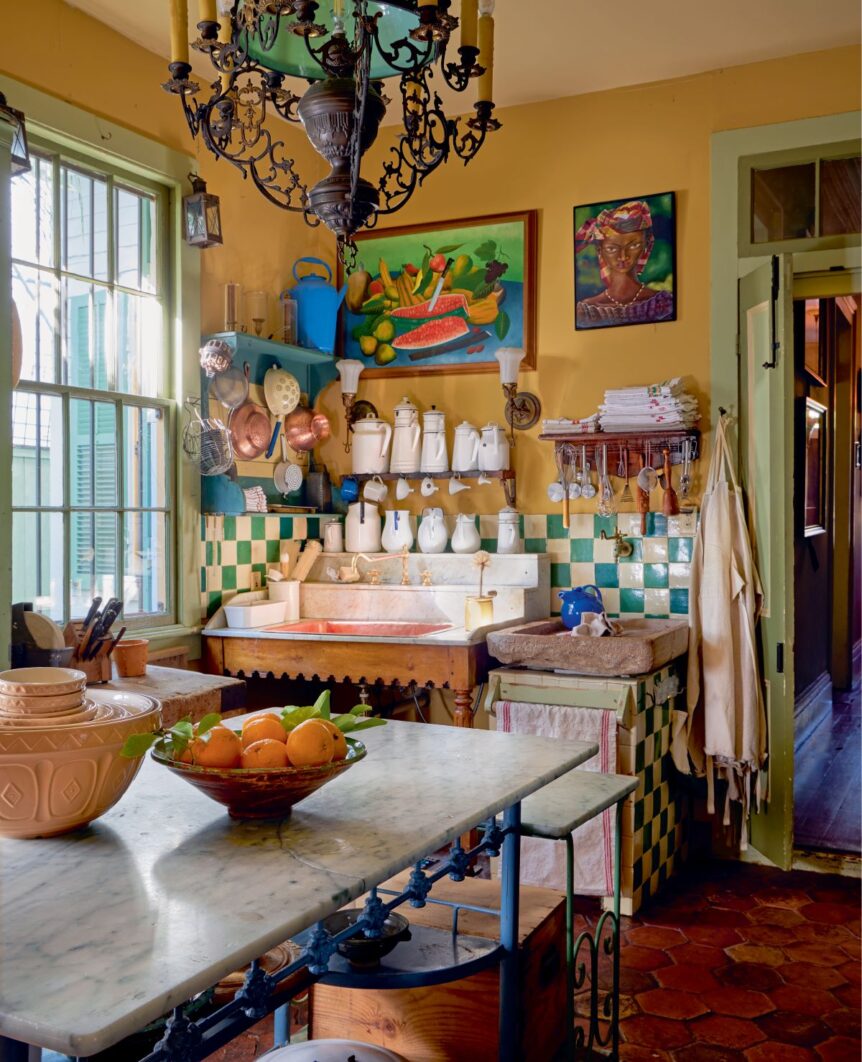
Patrick Dunne and Nathan Drewes are conscious that their stewardship is merely one episode in their home’s long history. The house was designed by Henry Howard, arguably the most talented architect in mid-nineteenth-century New Orleans. He was responsible for lavish Greek revival houses, Italianate villas, and magnificent churches. Located in a Creole faubourg, Nathan and Patrick’s home is perhaps the humblest example of Howard’s work. Nevertheless, it bears many imprints of his style, including a floor plan that blends the French preference for ensuite (in the French sense, meaning connected) rooms with the Anglo influence for prominently expressed stair halls. While Howard simplified his residential plan for this house, he could not resist incorporating intricate medallions, deep crown moldings, and tall baseboards. The effect is quintessentially Creole New Orleans, evident in a severe facade facing the street that contrasts with touches of grandeur in the private areas around the back. Three generations of Patrick Dunne’s family have lived in the house at various times, which has given it the aura of a maison de famille, a Creole term to describe a house passed down through the generations.
Nathan is a native New Orleanian and multigenerational southerner. He was educated in Louisiana and earned his college degree in interior design, which included taking courses that delved deeply into architecture. He has worked in the antiques business for seventeen years, most of that time associated with Lucullus Antiques, the legendary antiques shop founded by Patrick. The business now has an adjunct, Decorations Lucullus, a full-service design firm run by Nathan, with a warehouse and studio brimming with treasures and furnishings.
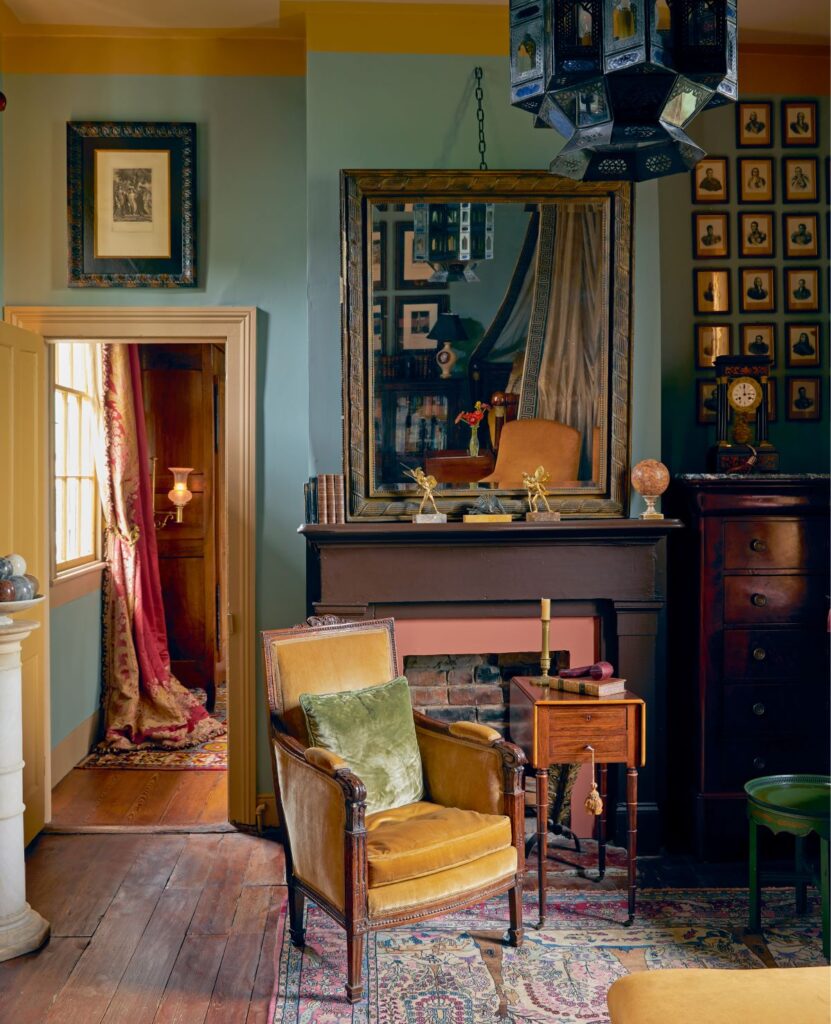
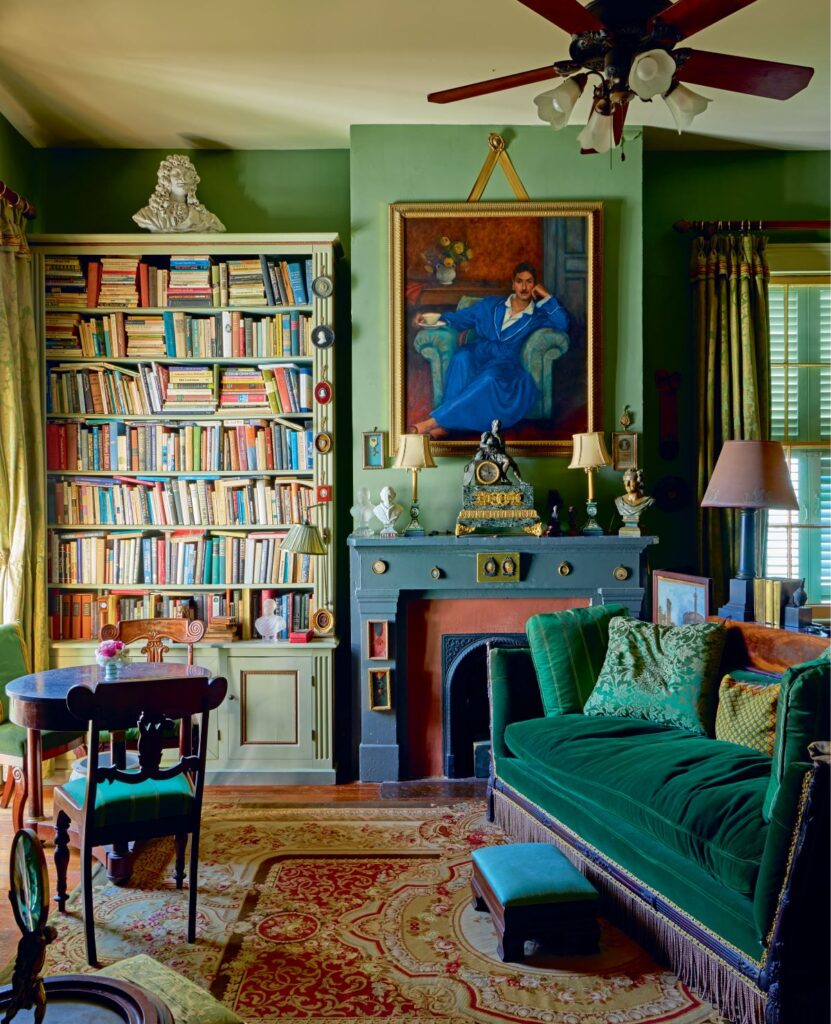
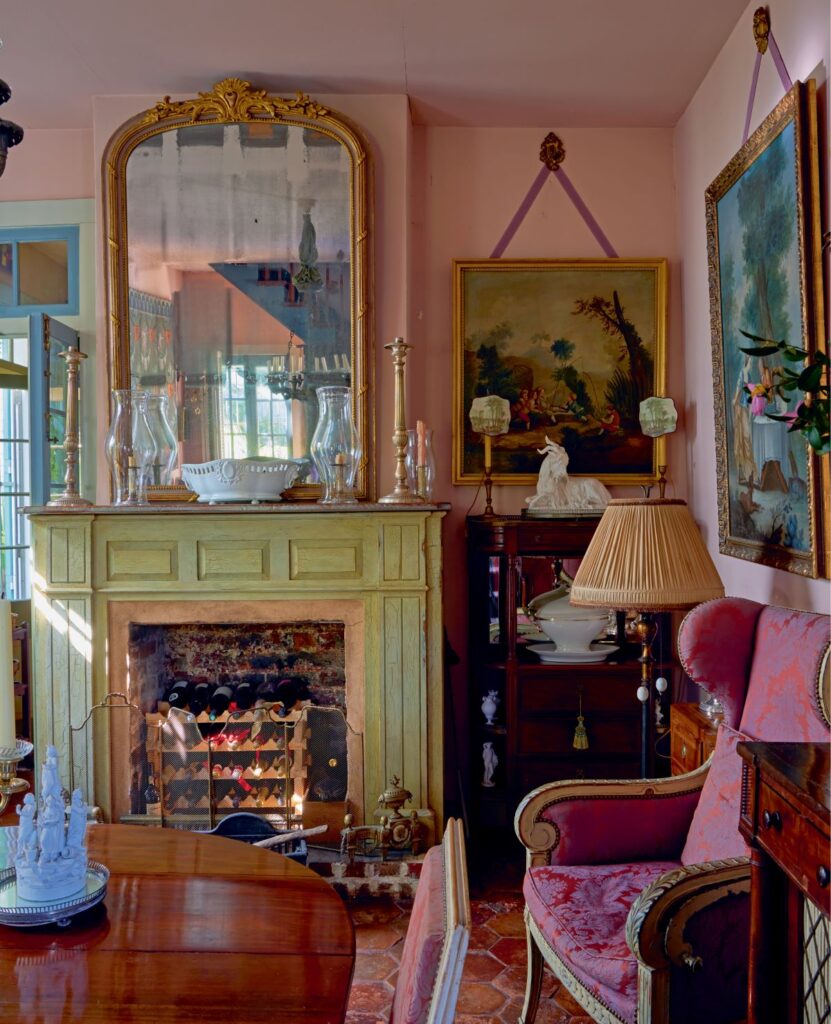

Patrick is a native of the South Texas Gulf Coast. In the early nineteenth century, his family was part of the massive wave of Irish immigration to New Orleans. His ancestors’ first encounter with America was via New Orleans, and from there they hit the wilds of Texas. Family lore sources most of the pretty things in the house and Patrick’s great-great-grandfather’s leather books as coming from New Orleans—even then a polestar of high style. Patrick pursued undergraduate and graduate studies in history and culture at Georgetown and at Tulane in New Orleans.




Without question the style and zeitgeist of New Orleans have wielded overwhelming influence on the aesthetics of both men. Extensive travel to France and Spain only served to enlarge and define those New Orleans Creole foundations of taste. Both are acutely aware of how the decorative elements that make the city unique operate on their outlook. They are comfortable combining the found, the personal, the inherited, and collected things in a jumble that expresses their own individual paths and the circumstance of living here. When Patrick had his first apartment on Royal Street, his collecting centered around the city dump, Volunteers of America thrift stores, and the curiosity shops that once filled the French Quarter. Since his youth, Nathan’s instinctive preference—in both buildings and the decorative arts—has been for neoclassical design, wildly popular in nineteenth-century New Orleans as a symbol of all things Napoleonic. In the last few years, he has been able to indulge his passion for collecting items from that period while on various buying excursions. Though neoclassical architecture sometimes reads as severe, with a scrim of over-the-top Napoleon III, here a playful softness is incorporated, and gives a touch of moodiness and mystery to the rooms.
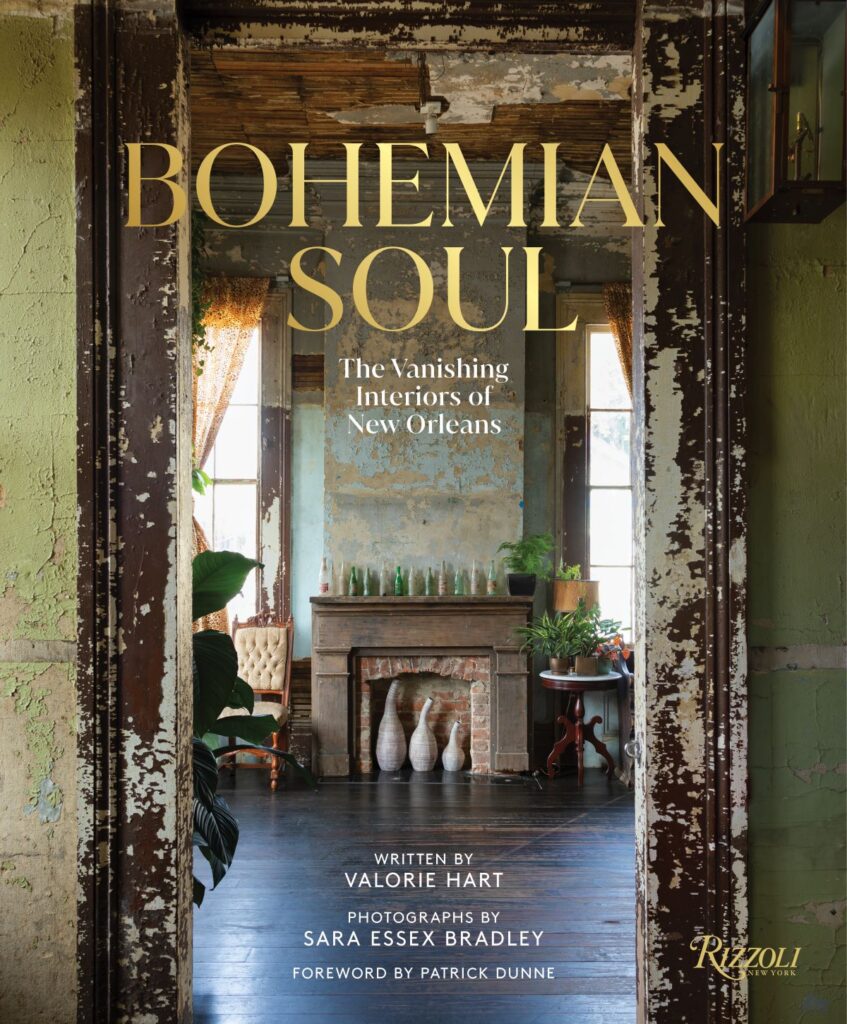
Nathan and Patrick agree that often the best things to happen in a room’s decor are accidental, unpremeditated, or frankly sentimental. These kinds of forces, from the faded and chipped to the elegant and fine, suddenly make a chair or a picture or a coffeepot just the right thing. This keeps the rooms of their house full of life and constantly evolving as they take on new experiences, loves, and decorative elements every day, living by their motto, “Life is better with antiques.”
This article is excerpted and adapted from Bohemian Soul: The Vanishing Interiors of New Orleans, published by Rizzoli New York.

